Differences Between Icing Sheets, Wafer Paper and Rice Paper
Rice paper, wafer paper and icing sheets – are they all the same and can they be used the same way? We get these questions often, especially now when wafer paper as well as rice paper are gaining more popularity in cake decorating.
So what are the differences and can one be swapped with another?
When it comes to edible image printing there are essentially two different products that you can use – edible icing sheets (aka frosting sheets, sugar sheets) and wafer paper (sometimes known as rice paper, but technically very different from rice paper).
What are Icing sheets?
Icing sheets are thin sheets of white icing pressed onto a plastic backing paper to allow you to use them on printers essentially making them edible paper.
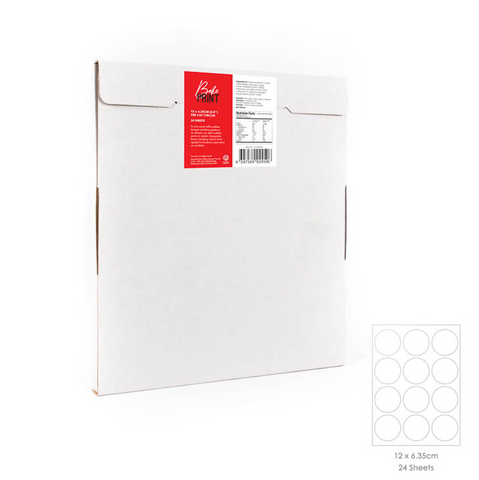
Icing sheet images can be used on cakes, cookies, cupcakes, cakesicles and even on chocolate.
Once you’ve printed your image, you peel it off from the backing and place it onto your baking. Depending on the brand of the icing sheets you may have to freeze them for short amount of time to be able to remove the image from the plastic.
Icing sheets come in various sizes of pre cut circles as well as A4 and A3 size sheets that you can use as wraps around the cake. You can also use sharp scissors on icing sheets or scalpel knife to cut out your own shapes.
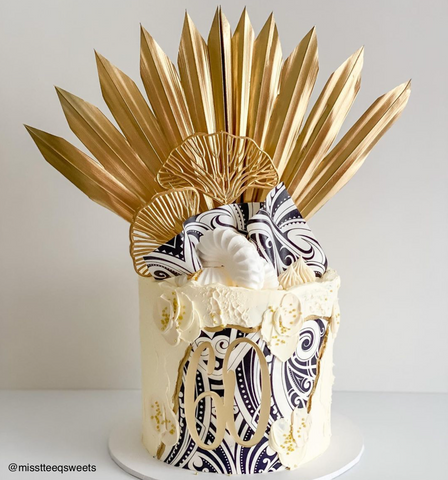
As icing sheets are thicker than wafer paper and closely resembles fondant they tend to produce higher quality print finish than wafer paper does.
Being that icing sheets are similar to fondant they don’t hold they own shape and need to be placed on flat surface in order to remain flat.
Decorators often use plaques made out of chocolate or gum paste if they intend to use images on surfaces that are not flat or if they need to have images standing up by themselves.
Icing sheets (printed or plain ones) should be stored in room temperature in airtight bags and should ideally not be placed into refrigerator.
If the cake does need refrigerating, we do recommend adding edible images on it as late as possible to avoid any sweating or colour bleed.
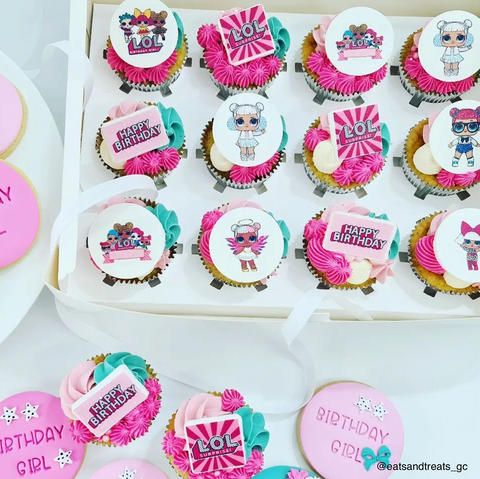
Attaching edible images to your bakings is simple, you just need to make sure that the surface you’re attaching it to is slightly damp, not wet. You can use small amount of water for it or edible glue or some clear glaze as well.
What is Wafer Paper?
Wafer paper is edible paper for cake decorating. And yes icing sheets are also classified as edible paper but two of them are two very different products.
Wafer paper is starch based product usually made out of potato starch, water and vegetable oil. It can also be made out of rice starch (which is why sometimes people call it rice paper, but we will get to that later).
Wafer paper is vegan, gluten free and free from most allergens, something that icing sheets may not always be.
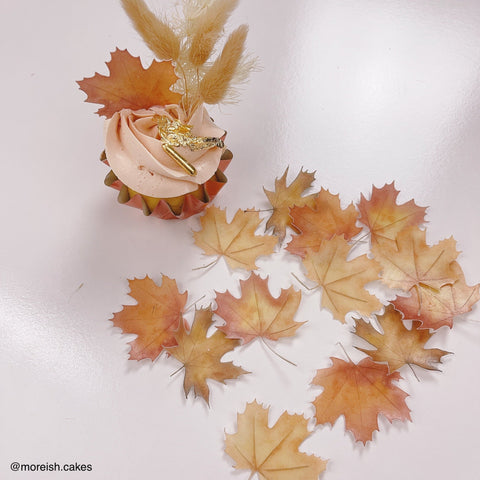
Wafer paper resembles a lot your normal non edible printer paper in texture, but is 100% edible and can be used for so much more than simple printing – creating flowers, textures etc.
Wafer paper normally comes in two different thicknesses, 0.3mm which is the most common thickness out there and 0.65mm which is also known as wafer card. Thinner version of wafer paper is quite similar to real paper – it won’t necessarily hold it’s own shape for too long, and with the great humidity can flop quite quickly.
The thicker wafer paper tends to be used for stand up cake toppers because of its ability to ‘stand up’ when inserted into a cupcake / cake.
When printing on wafer paper, you’ll use it as you would use normal paper. It doesn’t have backing paper like icing sheets do and can simply be printed on and placed on cakes. Wafer paper comes with rough and smooth side, the best printing results are achieved by printing onto the smooth side.
Wafer paper sheets do not come precut like icing sheets do, but can be easily cut with scissors, sharp knife or Cricut machine should you have one available.

Similar to icing sheets wafer paper has to be attached to tacky surface to “glue” it on. It does have a tendency to curl if it’s applied to wet icing so be very careful not to over wet the surface.
If being used on buttercream always apply them at the last minute or when the buttercream has hardened.
Being that wafer paper is much thinner than icing sheets, we don’t recommend placing them on dark surfaces as the backing colour will interfere with the colour of the printed wafer paper.
Wafer paper should be stored similar to icing sheets – airtight to avoid drying out.
Which one is better tasting?
Wafer paper is pretty much tasteless product. Lack of flavour means that it doesn’t affect the flavour of your bakings which is great.
Icing sheets tend to have very slight sweet flavour which when consumed by itself may not be the most pleasant thing to eat, same as consuming plain fondant. However, as the icing is generally absorbed into the cake any taste is usually not noticeable when consumed together with the cake.
Which one should I choose for printing?
In general we do recommend using edible icing sheets due to the greater quality they will give.

Wafer paper is much cheaper to purchase though so if you’re on a budget you may consider wafer paper over icing sheets. Wafer paper is also more suitable when you’re wanting to use images to stand them up so I guess it depends a lot on how you’re planning to use your images, they both definitely have their place in cake decorating world.
What is Rice Paper?
And finally what is this rice paper that people keep mentioning?
Well as mentioned before wafer paper is sometimes (not very often though) called rice paper due to the rice starch content in the paper (which again is rather rare as most brands use potato starch). So when you are not familiar with culinary and cake decorating world you may mix them up easily.
The confusion comes though as rice paper is not only 100% completely different product to wafer paper but also that only just recently has it made its way to cake decorating world.
Years ago when you mentioned rice paper, you would have been quite certain that you were actually talking about wafer paper. These days you need to know the context to figure out what product one is talking about.
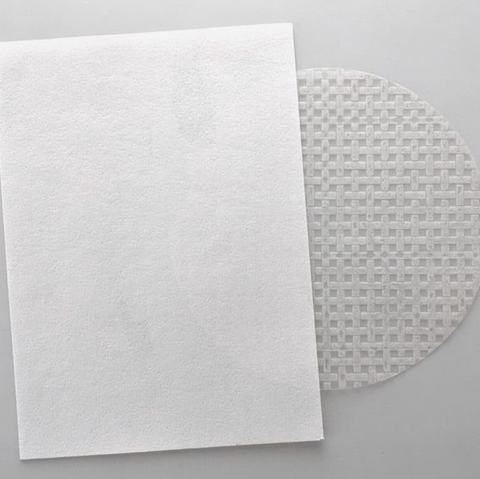
Edible rice paper is a round translucent sheet, made out of rice powder and tapioca. It is used in Asian cooking to make rice paper rolls and other food items. Rice paper in its original form is quite stiff, not flexible and will break easily when bent.
To be able to use rice paper it needs to be immersed in a bowl of warm water to soften it, which is completely different to wafer paper that would not be able to stand up that amount of water and still be usable. Basically when wafer paper gets that wet, it will absorb the moisture and will essentially melt into a shapeless and unworkable starchy mess.
When rice paper gets wet, it will be stretchy and limp, but you'll still be able to manipulate it for a short time. Once wet it will stick to itself but you’ll be able to pull it apart to work with it.
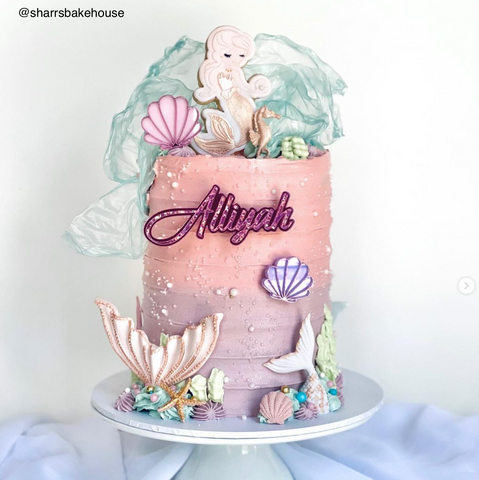
You can cut rice paper with scissors but you won’t be able to use it for printing as they won’t feed through correctly and will simply break in the printer.
They generally have a pattern on them that will disappear when you soak the sheet in water, and you can colour the wet sheets with food colouring to tint them.
You can also fry rice paper sheets in oil to make them puff.
How do You Use Rice Paper in Cake Decorating?
Basically rice paper has only 2 uses (so far) in cake decorating world – rice paper sails (that are super popular on cakes right now) and rice paper puffs.
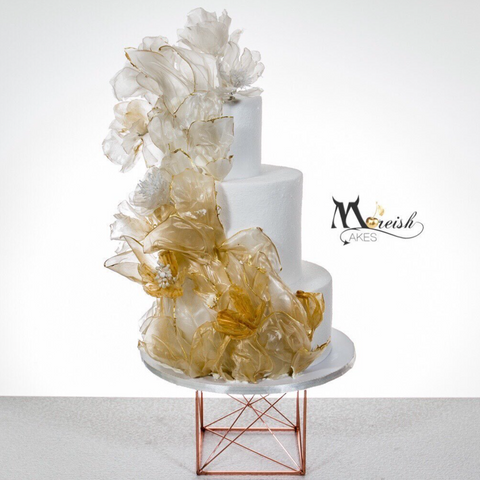
Rice paper can be used to create stylised flower petals and flowers out of the sails and puffs but it has limited uses for cake decorating.
When rice paper dries after being moistened and softened it's still stiff and it isn't appetising to eat because of that. You can eat the puffs though.
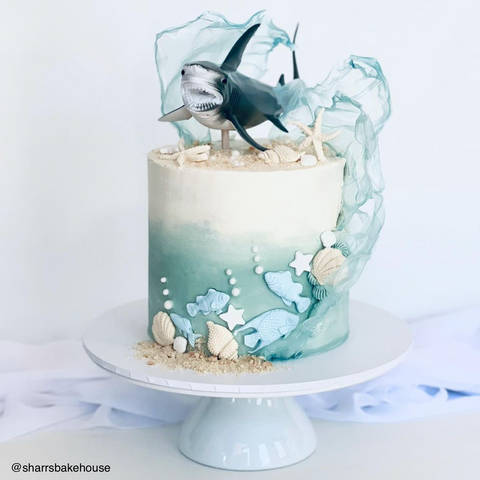
Making rice paper sails is quite easy. Simply place the sheet in the warm water for about 15 seconds until it becomes soft and can be manipulated. After that you can place it over a silicone mat or a piece of baking paper to let it dry in different shapes. When rice paper sails are completed, they will still have clear translucent look to them.
When making rice paper puffs, you can cut the shapes out before frying the rice paper to get more suitable shapes and sizes for your cake design. Differently from sails you cannot manipulate the puffs once they are cooked, so it is good to have them smaller sizes before your start frying them. You also cannot really control the shape you’ll get from the frying as each piece will take the shape it will take, and you simply have to go with it. Fried rice paper puffs will turn white and are not see through different from the rice paper sails.
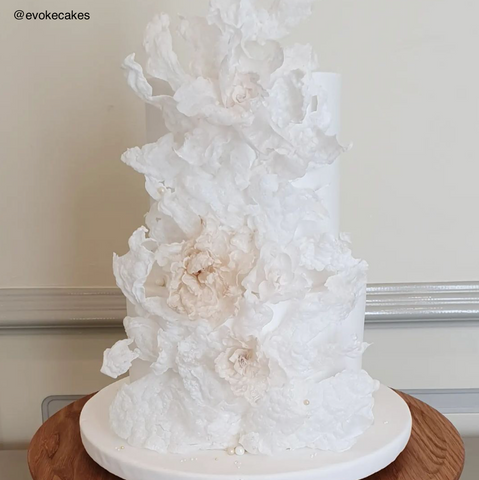
Rice paper is less sensitive to humidity and will change its shape lot slower than wafer paper does. It can also be placed in the fridge if needed.
So there you go, now you know what wafer paper, icing sheets and rice paper are and how to use them in cake decorating world.
In our next blog post we will dig more deeply into the wafer paper world as there are lot more ways you can use it besides edible printing.

